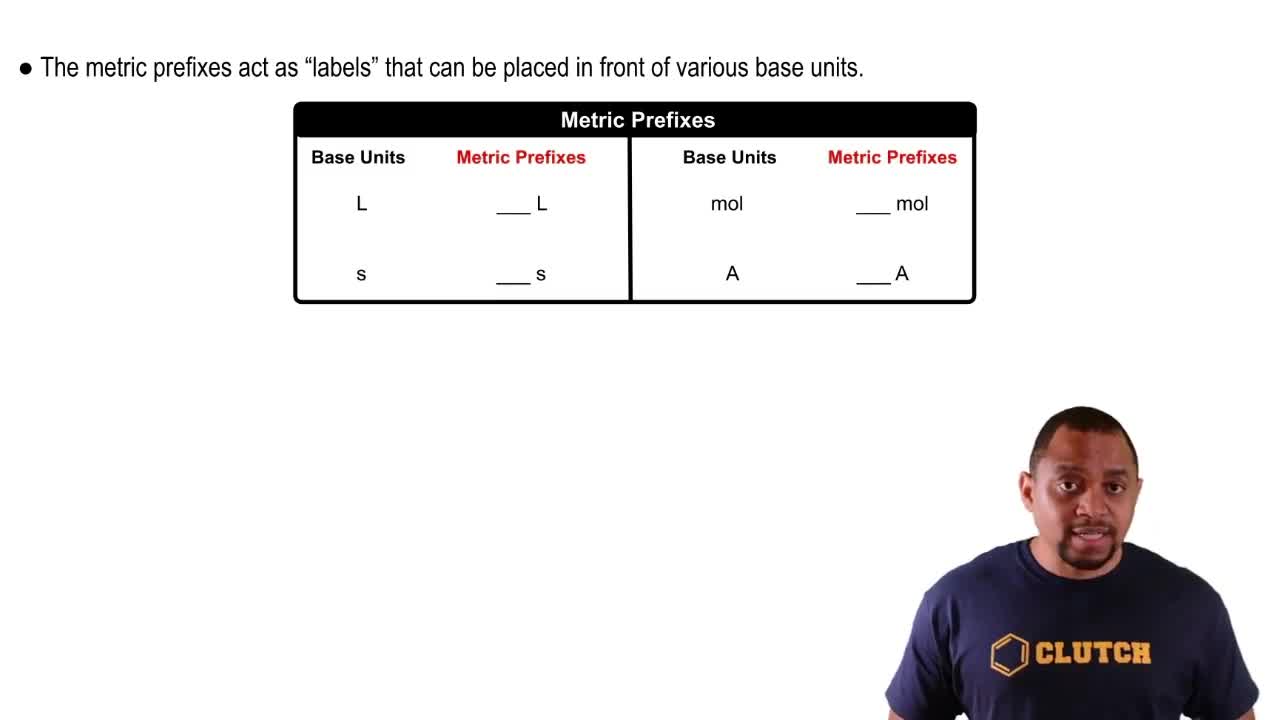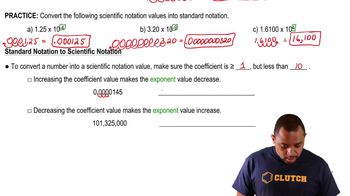Textbook Question
For each of the following processes, does the potential energy of the object(s) increase or decrease? (b) Water is pumped from ground level to the reservoir of a water tower 30 m above the ground.
 Verified step by step guidance
Verified step by step guidance



For each of the following processes, does the potential energy of the object(s) increase or decrease? (b) Water is pumped from ground level to the reservoir of a water tower 30 m above the ground.
Use appropriate metric prefixes to write the following measurements without use of exponents: c. 6.48×10-7 L
Use appropriate metric prefixes to write the following measurements without use of exponents: d. 1.81×10-2 s
Make the following conversions: a. 72 °F to °C
Make the following conversions: c. 233 °C to K
Make the following conversions: d. 315 K to °F